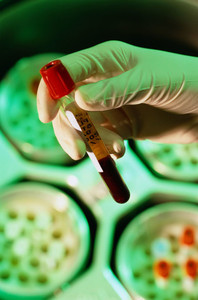As reported by Scrip, the emerging markets may not be as lucrative as they are being made out to be, at least in the short-term, and are expected to attain critical size only by around 2014, according to a new study by Mehta Partners.
Mehta BioPharma Outlook 2010: Emerging markets not as attractive as they seem
Home/Reports
|
Posted 24/02/2010
 0
Post your comment
0
Post your comment

In its report Outlook 2010: Global Pharmaceutical and Biotechnology published on 5 January 2010, Mehta Partners suggests that near-term opportunities from the BRIC countries (Brazil, Russia, India and China), as well as South Africa and Turkey, may not be as large as they are believed to be.
"Emerging markets continue to grow fast, but lack the critical mass in terms of gross domestic product (GDP) size to be able to afford innovator products", the report notes. Inability of governments to subsidise high-priced medicines for large patient pools, as well as a pharmacoeconomics-based decision-making culture at the physician and patient-family level, will not permit ‘super’ growth rates in these markets in the foreseeable future.
The biggest brand in India has revenues of US$20 million, while peak sales of any patented product are not higher than US$25 million in China. Emerging markets are, however, sustainable because of their ‘out-of-pocket’ characteristic (where thousands of customers pay for medicines) compared with the developed markets, where governments and insurance firms bear much of the expense. The report also notes that companies that have mastered the ‘art of fair premium pricing’ have benefited. One such example is Novo Nordisk, which has a 66% market share in India in the insulin segment, even though two Indian competitors offer their products at a 33% discount to its prices. There has been significant interest in emerging markets, which for many are considered the engine of future growth for the pharmaceutical industry, and most large companies including Pfizer, GlaxoSmithKline and Sanofi-Aventis are keen on accelerating growth in these countries. Annual pharmaceutical sales in emerging markets are expected to exceed US$400 billion by 2020, equivalent to current sales in the US, plus five major European markets, according to IMS.
Mehta Partners also believes that R & D is showing strong signs of recovery, as new science (i.e., the application of new tools of R & D by researchers) appears to be delivering results. The number of FDA approvals for new molecular entities/new biologics in 2009 has risen, perhaps indicative of the revival in R & D productivity and the industry's ability to replace sales that will be lost due to patent expiries over the next five years. The report lists 13 product approvals for global companies, including seven biologics, in 2009, compared with nine in 2008.
Mr Tarun Shah, Head of Research at Mehta Partners, told Scrip that he expects R & D productivity turnaround to be ‘remarkable’ in 2010, with at least 40 new product approvals during the year. These products are expected to generate cumulative peak sales of US$29.45 billion (against sales lost due to patent expiry in 2010 estimated at US$15.6 billion). "The good part of the 2010 approval cycle is that there are only three products that are expected to reach peak sales in the range of US$2–3 billion. The remaining new approvals will generate peaks sales below US$2 billion, which is healthier for the pharmaceutical industry as the Lipitor and Plavix kind of [patent expiry] scare will not be repeated when the new lot of approvals face expiry", Mr Shah said.
References:
Anju Ghangurde. Emerging markets "not as attractive as they seem". Scrip News. 2010 January 27.
Global Pharmaceutical and Biotechnology Outlook 2010. Mehta Partners BioPharma Outlook report. 2010 January 5.
Source: Scrip News; Mehta Partners BioPharma Outlook report
Guidelines
New guidance for biologicals in Pakistan and Hong Kong’s independent drug regulatory authority
Canada poised to remove requirement for Phase III trials for biosimilars
Policies & Legislation
ANVISA tackles 24-month backlog in biologicals post-registration petitions
US EO: delivering Most-Favored-Nation Prescription Drug Pricing to American patients
Advancing biologicals regulation in Argentina: from registration to global harmonization

Home/Reports Posted 10/10/2025
China-to-West pharma licensing deals surge in 2024 amid innovation push

Home/Reports Posted 22/05/2025
The best selling biotechnology drugs of 2008: the next biosimilars targets








Post your comment